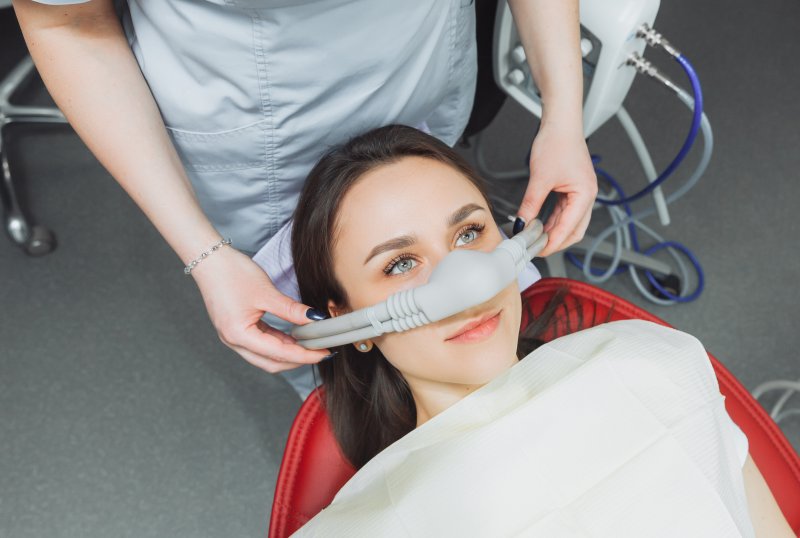
There are three types of dental sedation available for patients who need help to remain calm during an appointment. These include nitrous oxide, oral medication, and IV sedation. Knowing which one will help you reach the level of comfort you desire often requires meeting with your dentist to discuss various aspects of your oral and overall health. The use of an IV is less likely, as it’s commonly reserved for patients with special needs or who require complex dental care. So, is laughing gas or oral sedation better? Keep reading to find out.
What is Nitrous Oxide?
Nitrous oxide, also known as laughing gas, is a breathable solution that causes a patient to become relaxed while in the treatment chair, experiencing no anxiety or fear. The gas consists of a mixture of nitrous oxide and oxygen and is administered via a nasal mask that is placed over an individual’s nose.
As they inhale, the gas will induce a calming effect that allows the person to feel at ease; they may become giggly, as its nickname implies.
Throughout treatment, the person will never be fully sedated but instead, they’ll remain cognizant but unbothered.
After the dentist is finished, the mask is removed, and the gas is turned off. This will cause the effects to dissipate within minutes. This fast-acting solution makes it possible for individuals to resume normal activity following their appointment.
What is Oral Conscious Sedation?
Oral conscious sedation is delivered in the form of a pill, which is to be taken before the scheduled appointment time. The dentist will go over how soon the medicine is to be ingested.
Once the person reaches the dentist’s chair, they will feel relaxed, comfortable, and unphased by their surroundings. These types of effects are why dentists strongly recommend patients have someone bring them to their appointment and escort them home.
While in the dentist’s chair, the individual will likely feel sleepy; however, they will not fall completely asleep. If the person needs to respond to the dentist, they’ll be able to do so easily.
Once treatment is complete, the effects will take time to wear off, so another person will need to escort the individual home to ensure optimal safety.
Which One is Better?
When trying to determine which one will produce the best effects, there are a few different components a dentist will consider:
- Treatment Required: Does the patient need a simple checkup and cleaning or a more invasive procedure, like tooth extraction or a root canal? If it is the first option, nitrous oxide might be enough to work. Otherwise, oral conscious sedation may be the preferred solution.
- Level of Anxiety: Nitrous oxide is typically recommended for individuals with mild dental anxiety. Oral conscious sedation is commonly used for those with serious anxiety or who require more invasive dental procedures.
- Preference: If the dentist clears the patient for both types of sedation, the patient may make their decision based on whether they want to take a pill or breathe in a gaseous mixture.
- Side Effects: Nitrous oxide’s effects wear off quickly, within minutes; however, oral sedation takes time – 4-6 hours or even a full day.
Which type of sedation you prefer is a decision you will need to make with your dentist. Trust, though, that whichever one you choose, you’ll have a more relaxing and enjoyable experience.
About Grand Dental – Lockport
At Grand Dental – Lockport, our dentists know how difficult it can be to have dental anxiety. By offering different options for sedation, we can identify the underlying cause and discuss which option is right for you. Visit our website or call (815) 240-8068 if you would like to go over the differences between sedation solutions and which will deliver a more positive experience.
